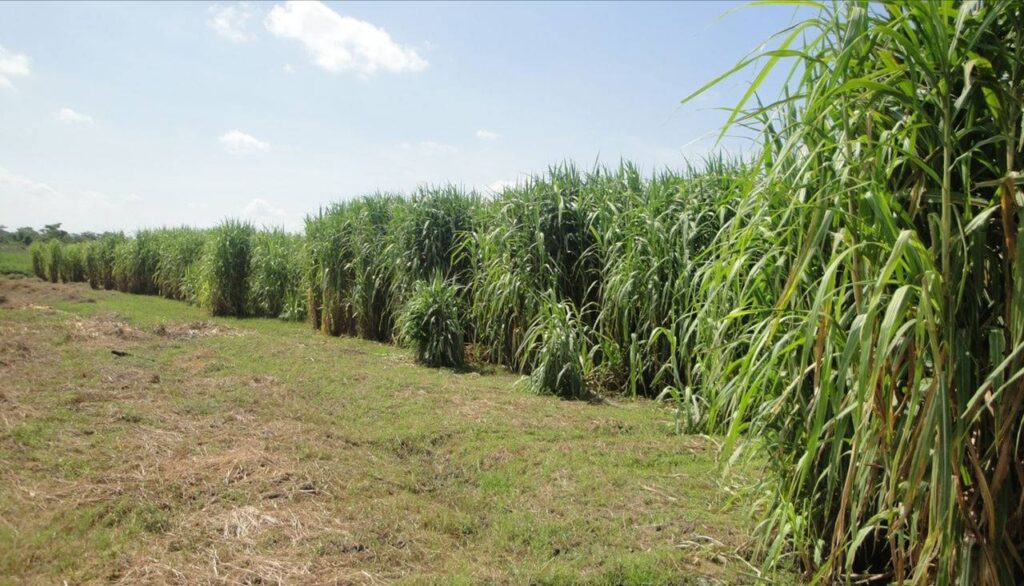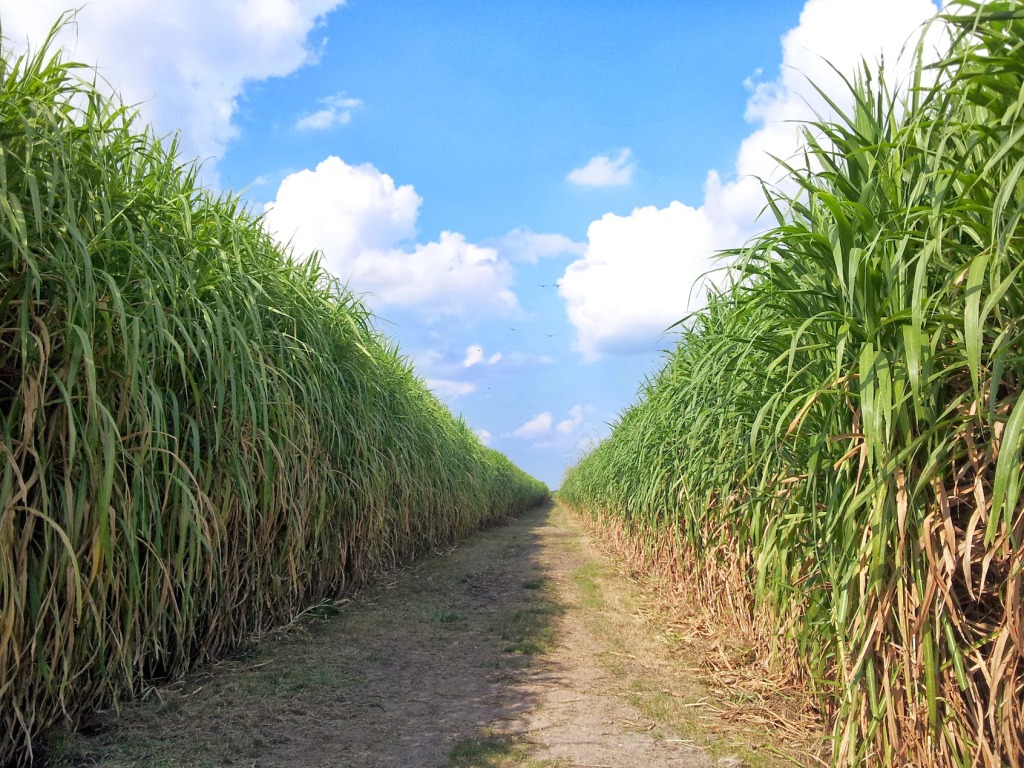
Improving logistics in Napiergrass during harvest operations
Napiergrass is one of highest yielding crops in tropical countries that can be used for pulp and bioenergy. Improving logistics in Napiergrass during harvest operations is required in several environments. Its tall stalks and low leaves/stalk ratios (below 40%) allow high process efficiency for both pulp and energy uses and also a low biomass production cost. Nevertheless, harvesting the whole plant with silage machinery can seriously affect delivered-biomass costs at the gate of the biorefinery and some logistics strategies need to be implemented to reduce costs.
Moreover, one of the most limiting factors in tropical environments is the fact that the plant is difficult to dry as it has no natural senescence. Only some bottom leaves become yellow, while upper leaves are often removed with sugarcane harvesters. The second problem is that the crop re-grows strongly just after the harvest time (sometimes faster than a week). Harvest periods occur in the dry season which are 5-6 months (January to June). The best period for harvesting will be in the middle of the dry season (from March to April in Central America for example).
One or two cuts might also be possible depending on rainfall during that period or possible irrigation uses. Yields can vary from 15 to 40 oven dried tonnes (ODT) per ha each year, and moisture levels when harvesting can vary from 60 to 80%. So, how do we transport the biomass? How to harvest and separate leaves if desired (pulp mills prefer stalks as their products require non-wood fiber? What about power plants that often prefer to have this possibility of avoiding ashes produced by leaves?

A typical image right before harvesting with sugarcane machinery equipment in Napiergrass. A huge quantity of biomass remaining on the ground will be left.
Some alternatives have been developed for Sorghums and Arundo donax (Giant reeds) and can be also implemented efficiently in Pennisetum purpureum (Napier grass). The goal? to reduce moisture levels, improve harvest efficiency and reduce transportation costs. Baling is a viable option in all these species. Anyway, sometimes farmers just don’t have the time required to let biomass on the ground for field-drying. By that time, the regrowth will be limited by further operations (after harvesting). Sometimes, irrigation and subsequent fertilization is required as well.
Napier grass is already a highly productive perennial grass in Veracruz (Mexico), and its productivity can easily achieve more than 30 odt/ha.year as it is shown in a large scale project in Mexico (see Scribe) for a pulp mill below:
As it is shown in this video, baling is possible as well, even in mega big bales after field drying in the tropics.
Mowing conditioners in sorghum have been providing good results to achieve stalk ripping and moisture losses in several climate conditions, as it is shown in Spain in this video:
Haylage options are also tested in napier grass

